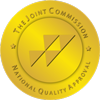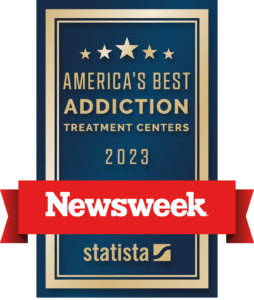Is Addiction a Disease Or a Choice?
 Many people wonder whether addiction is a disease or a matter of choice. You can ask anyone who has an addiction or who lost a loved one to it, and they will tell you that a life of drug abuse isn’t one that anyone would choose. And most medical professionals agree. The American Medical Association (AMA) classified alcoholism as a disease in 1956 and went on to include addiction as a disease in 1987.
Many people wonder whether addiction is a disease or a matter of choice. You can ask anyone who has an addiction or who lost a loved one to it, and they will tell you that a life of drug abuse isn’t one that anyone would choose. And most medical professionals agree. The American Medical Association (AMA) classified alcoholism as a disease in 1956 and went on to include addiction as a disease in 1987.
Nevertheless, everyone chooses whether to use drugs or take a drink for the first time. After that initial choice, an individual has no choice regarding how their brain will react. However, when substance abuse rewires your brain, the ability to make good choices and decisions becomes compromised.
What is Addiction?
In 2019, the American Society of Addiction Medicine defined addiction as “a treatable, chronic medical disease” involving complex interactions among:
- Genetics
- Brain circuits
- Environment
- Individual’s life experiences
People with addiction use substances or take part in behaviors that become compulsive and often continue even though they are causing them harm. Prevention efforts and treatment methods for addiction are generally as successful as they are for other chronic diseases.
Drug abuse and/or alcohol abuse, also known as substance use disorder (SUD) is a persistent disease of the brain that could end up happening to anyone. A severe SUD happens when the use of the substance becomes uncontrollable and hurts the individual’s everyday life. This may show itself as:
- Problems at work or school
- Conflicts in relationships
- Legal or money problems
How Addiction Changes the Brain
Experts are still learning about how and why the disease of addiction develops, similar to other diseases like diabetes and heart disease. This is why addiction is a disease:
Rewiring the Brain’s Structure
Addiction alters the way the brain works. It rewires its structure. Alcohol and drugs hack into your brain’s communication system and interfere with the way nerve cells send, receive, and process information.
The Reward System
Our reward system is made up of parts of the brain. These parts are in charge of rewarding us when we do something we like. Things like eating our favorite food, spending time with friends, working out, etc. The reward comes in the form of dopamine production. The brain releases dopamine when we do something enjoyable.
Since dopamine makes us feel good, it makes us want to keep doing what we’re doing, it also teaches the brain to repeat enjoyable behavior. Certain cues trigger the reward system, fuel the cravings, and create a habit cycle. The smell of your favorite food cooking can make you salivate and anticipate the enjoyment that is coming. In the same way, addiction fuels habit too. You may crave a cigarette every morning with coffee or you may want a hit of your drug of choice when you drive past the house where you used to do drugs.
Dopamine Surge
When you use a drug, your brain releases a surge of dopamine. It is a lot more than when you’re eating your favorite meal. The brain overreacts and cuts back on the production of dopamine to bring it down to a normal level. Therefore, as you keep using drugs, your body produces less dopamine. Once a person becomes addicted, it takes more and more of the drug just to feel normal. This is called tolerance.
Addiction’s Effect On Behavior
Studies have indicated that addiction changes the areas of the brain that are in charge of:
- Judgment
- Decision making
- Memory
- Learning
- Behavior control
These changes can lead to a good student flunking out, an employee not showing up for work, an individual lying about draining the savings account, or an overdose in a parking lot.
A person’s willpower also changes when substance use changes the brain. If an addicted person tries to quit, their brain tries to protect them from the pain and intensity of withdrawal symptoms. Addiction gives energy to your brain’s response to doing anything it takes to stop the cravings and discomfort. This includes overriding the willpower not to use by taking a drink or using a drug.
Factors Involved in Addiction
A disease is a condition that alters the way organ functions and chronic disease can be treated and managed. However, it can’t be cured. Addiction is a chronic disease of the brain the way heart disease is a chronic disease of the heart and diabetes is a chronic disease of the pancreas.
Addiction affects anyone. It doesn’t discriminate by age, race, sex, high-rent, or low-rent districts. Addiction makes its way through all walks of life. There isn’t one certain thing that can predict a person’s chance of developing a SUD. Still, researchers agree that there is a combination of risk factors involved that may increase the risk, such as:
- Genetics/family history: According to the National Institute on Drug Addiction (NIDA), If addiction runs in the family, you have up to a 60% greater risk of becoming addicted too.
- Environmental factors: Similar to growing up in a place where fried foods, soda, and sugary foods may increase your risk for heart disease and diabetes, growing up in an environment with adults who use drugs will increase the risk of addiction.
- Development: Using drugs as an adolescent up to age 25 while the brain is still developing increases the chances of addiction and may cause serious, lasting damage.
Is Addiction a Choice?
Although science has confirmed that addiction is a chronic brain disease that could happen to anyone, there is still popular belief that addiction is caused by a weak character and a moral failure. It’s easy to blame the individual for bad behavior like lying, cheating, and stealing rather than focusing on the disease that creates those behaviors.
It’s difficult to feel compassion for people when the assumed poor character is confused with the disease characteristics that cause it. This is shown in a sweeping attitude that labels people and withholds help for “bad people who don’t deserve help”. Compounding this is a common belief that people choose to become addicted because of weakness, poor judgment, lack of self-control, willpower, and support.
Making the Choice to Receive Addiction Treatment
Shaming and willpower won’t undo the changes the brain has gone through and cure addiction. There isn’t any cure for mental illness or drug addiction, but tools and resources to help manage and cope with these diseases better. But treatment can help you manage and live with the disease successfully. In the same way, a person with diabetes or heart disease has to choose to exercise and eat a healthy diet to control their disease, a person with an addiction has to choose treatment to recover effectively.
That choice may be provoked by a court order or the ultimatum by the relatives or spouse. But frequently, someone chooses treatment on their own because they want a life without addiction and all the problems that come with it. Addiction experts don’t know why some people can quit using drugs on their own, and others can’t. For most people, recovery takes treatment that includes behavioral therapy and sometimes medications to control cravings and help the brain adjust to functioning without drugs.
Detox
For most people, detoxification in a professional detox center is the first step in the choice for recovery. Detox allows your body to rid itself of the drugs or alcohol and return to a normal state physically. However, there are still emotional and behavioral issues to deal with.
Substance Abuse Treatment Programs
Residential/Inpatient Program: This is the highest level of care. By living at the treatment facility, an individual can focus on recovery and not have to deal with the distractions and possible triggers in the outside environment.
Outpatient Programs (OP): Outpatient programs allow the person to live at home and carry on with their daily obligations. This level of care is effective for people who have a stable, healthy home environment and won’t have a problem going to the treatment center for their designated treatment. There are several levels of outpatient programs that differ by the amount of time spent at the treatment center. This type of treatment for drug abuse is an effective step-down program from a higher level of care.
Behavioral Treatment and Therapy
Cognitive-Behavioral Therapy (CBT): This is the most common type of behavioral treatment used for substance use disorders. It helps the individual unlearn faulty beliefs and the behaviors built on those beliefs.
Dialectical Behavioral Therapy (DBT): DBT is a behavioral therapy similar to CBT but with more of an emphasis on emotional and relationship issues.
Counseling
Group Therapy: Group therapy is more effective in the treatment of SUDs than individual therapy. However, for some individuals, individual counseling should be combined with the group approach.
Individual Therapy: Individual psychotherapy helps a person look at any underlying causes for their SUD. It’s very common for a person with a substance use disorder to also have a mental health disorder and individual counseling is an effective tool to discover and treat the mental health disorder as well as the SUD.
Family therapy: Addiction affects the whole family. That’s why many treatment centers offer family therapy to help educate individuals about addiction and to help mend the relationships that are often damaged by substance abuse.
Medications
Medications can play an important part in SUD treatment. Beginning with medicine to help get through withdrawal when you leave treatment. They can be an important part of a long-term treatment plan similar to other conditions including mental disorders. Some commonly used medications include:
- Buprenorphine–Buprenorphine reduces or eliminates opioid withdrawal symptoms in the treatment of opioid use disorder (OUD) including cravings and also blocks the opioid receptors in the brain. It can be used for detox or maintenance therapy.
- Methadone–Methadone also relieves withdrawal symptoms and reduces cravings and is useful in the maintenance treatment of OUD.
- Acamprosate–This medication helps reduce withdrawal symptoms in people with alcohol use disorder (AUD).
- Disulfiram–Disulfiram causes an unpleasant reaction if alcohol is used after taking the medication.
Relapse Prevention
Getting sober is hard work. Staying sober is equally hard. This is the nature of living with a chronic disease. To be successful, the changes in the brain need to be managed and so do the deep-seated behaviors. And then, the hardest part for many people is committing to managing new behaviors for the rest of their life.
Recovery can be very challenging. Relapses do happen. This isn’t a sign of a treatment failure, but a prompt to get back on track. Like other chronic diseases, it’s a signal that treatment needs to be adjusted or changed. At Sana Lake, we create a relapse prevention plan to lower the high risk of relapse that commonly occurs during the early stages of treatment and after.
Choosing Addiction Recovery at Sana Lake Recovery
Are you or someone close to you struggling with drug addiction? At Sana Lake Recovery, we understand that addiction is a chronic disease and we will help you without judgment.
Our experienced, licensed, and certified medical professionals can design a treatment program specifically to meet your needs while always treating you with dignity and compassion. Take a moment to contact us. We are here to answer your questions and address any fears you may have about substance abuse treatment.



